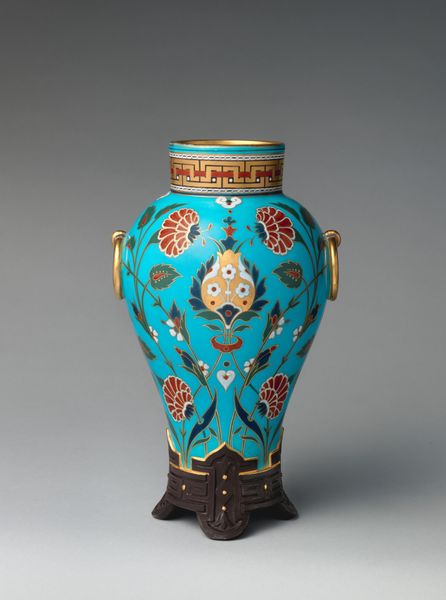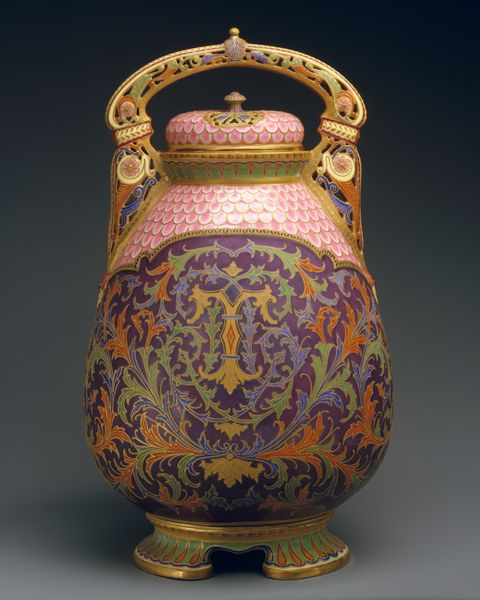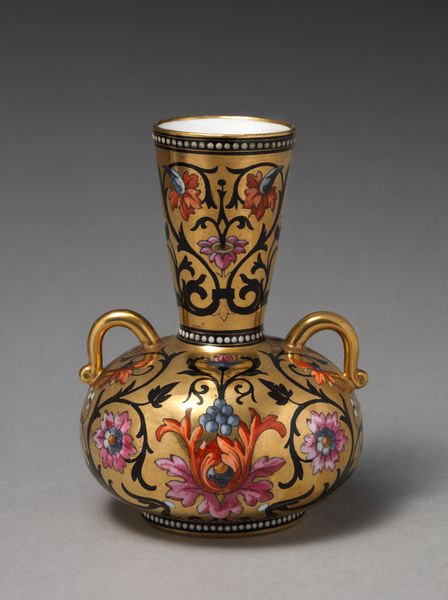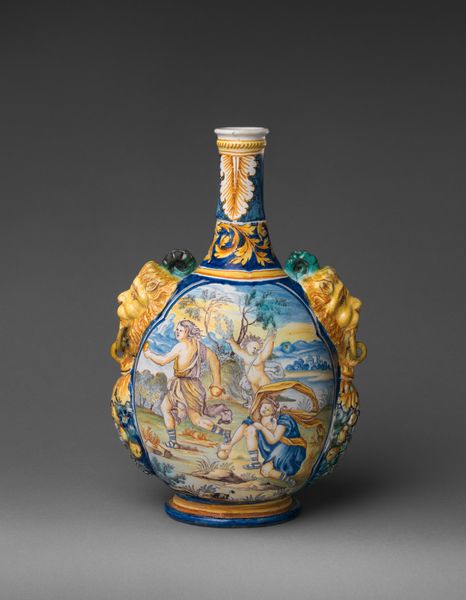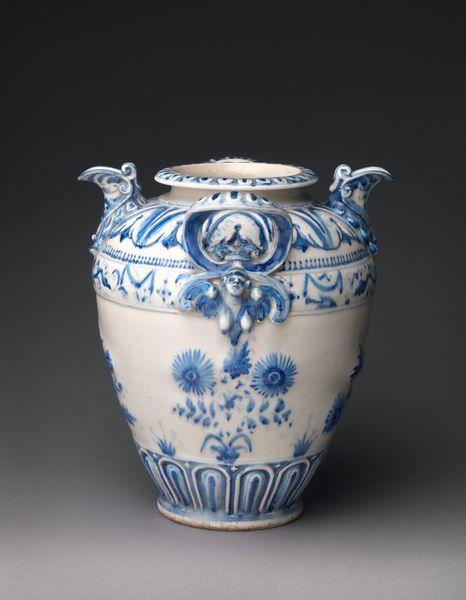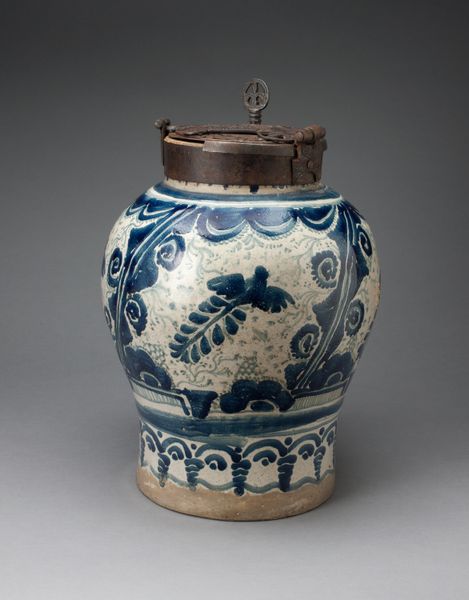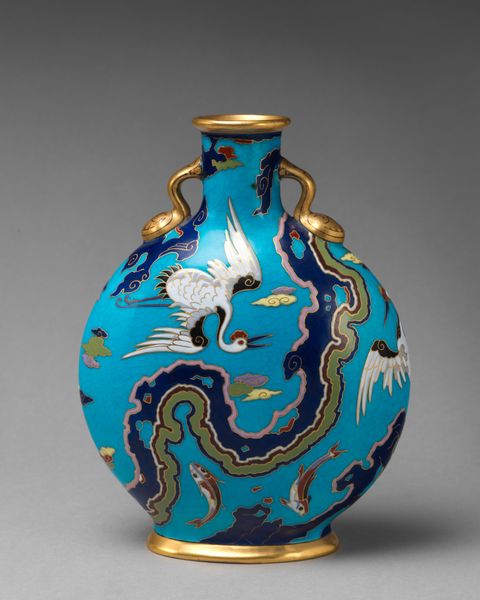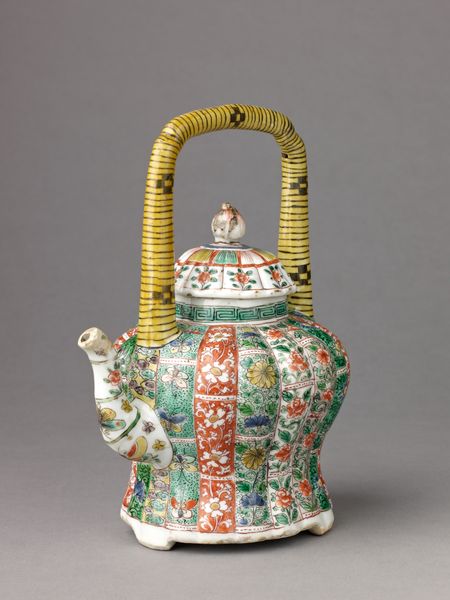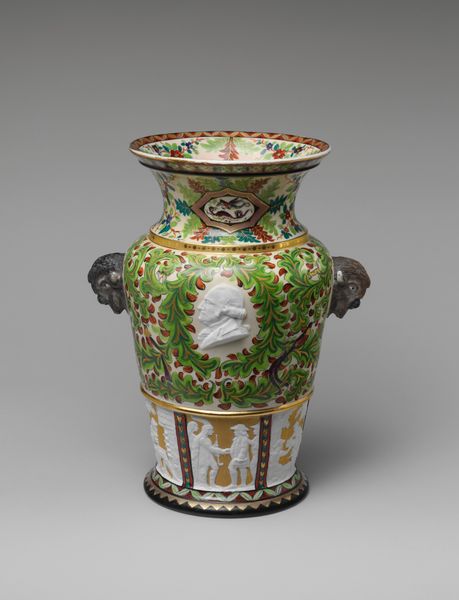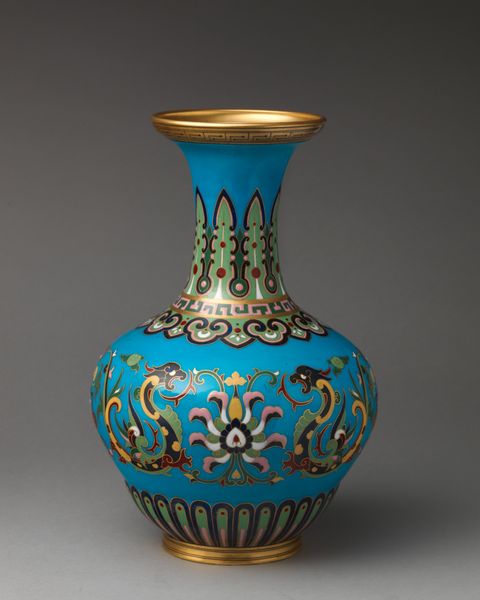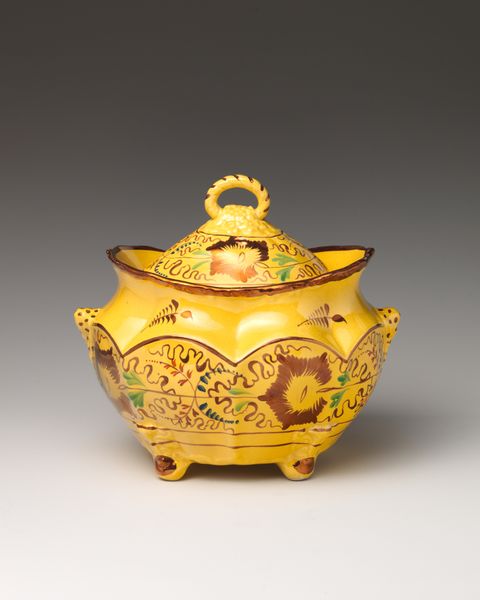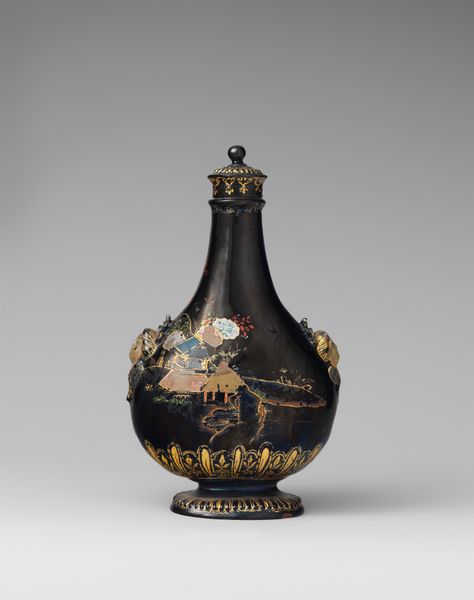
ceramic, sculpture
#
ceramic
#
11_renaissance
#
sculpture
#
decorative-art
#
italian-renaissance
Dimensions: Overall (confirmed): 16 9/16 × 12 15/16 × 12 1/2 in. (42.1 × 32.9 × 31.8 cm)
Copyright: Public Domain
Editor: So, this striking piece is a "Double-spouted armorial ewer," crafted between 1525 and 1535 by the LA Workshop. It’s made of ceramic and positively brimming with Renaissance ornamentation. All these intertwined forms give it such a luxurious, eye-catching effect! What stands out to you? Curator: It’s fascinating to consider this ewer as a product of its time. Ceramic production in Renaissance Italy was undergoing significant transformation, moving from largely functional objects towards highly decorative pieces, like this. We can see this armorial ewer not just as art, but as evidence of evolving labor practices. Who was involved in each step of the creation process, from mining the clay to painting? Editor: That's a really interesting point. I'd only thought about the design and decoration before, but not the actual physical making. How were these skills acquired, were workshops run like guilds? Curator: Precisely. Workshop structure determined the means of production, dictating specialization. A painter might only work on the heraldic shield; another exclusively on the arabesques. Consider how this impacts authorship and the value attributed to the "artist." This elaborate decoration and display of heraldry reflect the patronage system too, what could a piece like this communicate about social status? Editor: Right, so this piece isn't just aesthetically pleasing; it embodies production methods, economic structures, and social aspirations. I see how its existence is completely tied to these material conditions! Curator: Exactly. Examining these links allows us to consider more about the meaning and making of this stunning Renaissance ewer.
Comments
No comments
Be the first to comment and join the conversation on the ultimate creative platform.
